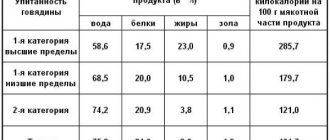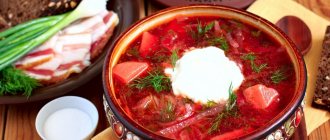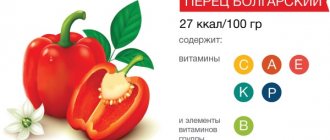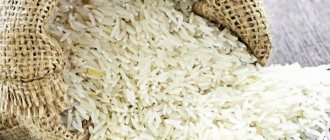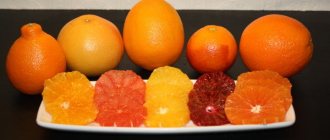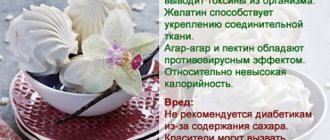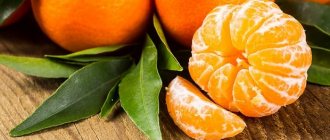Chemical composition of fried pollock
Allergy to pollock is very rare. In boiled form, it is allowed to be one of the first to be introduced into the fish menu of infants 8-9 months of age.
To get the maximum benefit, pollock is recommended:
- cook;
- steam or oven;
- stew.
Fried pollock, whose calorie content almost doubles compared to the above cooking methods, can be cooked on a grill or in a non-stick frying pan without adding fat.
Intensive frying in a large amount of oil can completely destroy the beneficial properties of fish.
The table shows a list of vitamins and minerals contained in the greatest quantities in 100 moderately fried pollock.
| Amount, mg | % of daily value | |
| Vitamins | ||
| A | 9.5 mcg | 1% |
| B1 | 0.09 | 6.5% |
| B2 | 0.1 | 5.5% |
| B4 | 50 | 10% |
| B5 | 0.23 | 4.5% |
| B6 | 0.09 | 4.6% |
| B12 | 1.5 mcg | 50% |
| D | 0.15 mcg | 1.6% |
| E | 6.5 | 43% |
| K | 3.1 mcg | 2.5% |
| PP | 4.46 | 22% |
| Minerals | ||
| K | 305 | 12% |
| Ca | 41 | 4% |
| Mg | 43 | 11% |
| Na | 578 | 45% |
| Ph | 183 | 23% |
| Cl | 966 | 42% |
| Fe | 0.86 | 4.8% |
| I | 0.058 | 39% |
| Co | 12 mcg | 130% |
| Mn | 0.26 | 13% |
| Cu | 0.144 | 15% |
| Mo | 4.4 mcg | 6.4% |
| Se | 13 mcg | 24% |
| F | 0.506 | 13% |
| Cr | 0.04 | 80% |
| Zn | 1 | 9% |
| Fatty acid | ||
| Omega 3 | 0.2 | 20% |
| Omega 6 | 3.6 | 73% |
The ratio of Omega 6 to 3 in a serving of pollock is 18:1, while for good health and healthy functioning of all organs it is recommended to maintain a ratio of 4:1 (in some cases 2:1). If you exclude oil from frying, the ratio changes to 1:1 (0.2 g Omega 3 and 0.2 g Omega 6 (4%)).
Nutritional value of fish
Pollock is a fish that is rich in protein and water, making it easily absorbed by the body. The low calorie content of pollock (less than 75 kcal) is due to the small amount of fat - less than 1% per 100 g. In addition, the product contains no carbohydrates, the protein content is about 16 g. Despite the low energy value, the fish helps fight high cholesterol levels.
Pollock contains healthy fatty acids, several groups of vitamins and a large amount of minerals: sulfur, calcium, copper, iodine.
The fattest part of the fish is the liver (more than 450 kcal); fillet and caviar (131 kcal) must be included in the diet. The latter helps fight excess weight by accelerating metabolism due to the high content of Omega-6 and Omega-3 acids.
The benefits and harms of fried foods
Doctors recommend including up to 400 g of seafood in your weekly diet. Eating small portions of lightly fried pollock (with a little or no oil) will benefit the body.
The chemical composition of fish contributes to:
- reducing the negative effects of tobacco on the body, which is especially important for smokers;
- maintaining the integrity of bones, teeth, strengthening cartilage tissue;
- improving the functioning of the musculoskeletal system;
- strengthening blood vessels, maintaining their elasticity, stabilizing heart rate;
- restoration of strength after illness;
- with systematic use, lowering sugar and cholesterol levels, improving brain activity and the ability to concentrate;
- acceleration of metabolism;
- normalization of the nervous system, resulting in a reduced risk of the negative impact of stress on health and the risk of developing depression;
- due to iodine content – improvement of thyroid function and general well-being;
- protein helps increase muscle mass, restore strength after grueling workouts (which is especially important for athletes and people engaged in heavy physical labor);
- potassium will help get rid of swelling due to its ability to remove excess fluid;
- iodine, selenium, and a complex of antioxidants in the composition help restore and cleanse the body during intoxication, eliminate heavy metals;
- the substances together contribute to the production of the hormone thyroxine, which is responsible for regulating the functioning of, among other things, the kidneys, liver, and brain;
- due to vitamins A, E, fatty acids, the condition of the skin, hair, and nails improves;
- zinc prevents acne;
- copper and iron serve to prevent anemia.
Abuse of pollock, especially fried pollock, leads to the following negative consequences:
- increased blood pressure, which is especially dangerous for people suffering from hypertension;
- exacerbation of gastrointestinal diseases;
- too salty fillet with a lot of added fat can lead to swelling;
- cause poisoning (seafood is prone to the accumulation of heavy metals and in particular mercury).
Dietary properties:
How many calories are in fried pollock, what dietary properties it has, all this is of great interest to those who lead a healthy lifestyle and monitor their health and figure. So we will try to answer these questions in the following article.
So:
Pollock is a bottom-dwelling pelagic cold-loving fish of the cod family, genus Pollock (theragra). The most common cod fish in the North Pacific Ocean. It is one of the main commercial fish in Russia. You can prepare many very tasty dishes from it.
Although it is considered a, let’s say, second-class fish, this fish is very healthy, especially since it is inexpensive and accessible to almost all segments of the population. And you don’t need any special culinary talents to fry or stew this fish.
If we talk about the benefits of this fish, then we need to start with its excellent antioxidant properties and the fact that this fish perfectly regulates the sugar level in human blood.
Pollock is useful for people with thyroid diseases, useful for normalizing the functioning of the nervous system and digestive system. Naturally, all the beneficial properties of this fish are due to its composition. Like all fish that is caught in the seas in the north, it has a lot of vitamins. This is, of course, first of all, vitamin A, as well as B vitamins, vitamin PP, and many others. This fish is not offended by proteins, which, by the way, are easily digestible, and of course one cannot help but pay attention to microelements and polyunsaturated fatty acids.
Of the microelements, it is worth noting chromium and cobalt. Chromium is necessary for the activation of certain enzymes responsible for heredity. Cobalt is necessary for blood restoration, for regulating carbohydrate and lipid metabolism.
Percent Daily Value
The percentage of BJU from the daily value in 100 g serving of fried fish is: 20% protein, 12% fat, 0.2% carbohydrates. In 100 g of fried pollock, the contribution of BZHU to caloric content is equal to: 50% proteins, 49% fats, 1% carbohydrates.
According to the recommendations of doctors, the contribution of BJU to calorie content should be close to the following indicators: 30% of calories come from fats, 12% from proteins, 58% from carbohydrates.
Calorie analysis
The table provides a list of ingredients most often included in fried pollock dishes and an analysis of their calorie content.
| Component | Quantity | Kcal | % of the daily value of 1340 kcal |
| Raw pollock | 1000 | 72 | 5.39% |
| Sunflower oil | 50 | 450 | 33.67% |
| Wheat flour | 150 | 479 | 36% |
| Ground pepper | 5 | 13 | 0.9% |
| Sour cream (15%) | 150 | 162 | 12% |
| Cream (10%) | 150 | 178 | 12.4% |
| Salo | 50 | 420 | 31.5% |
| Butter | 30 | 198 | 15% |
| Breadcrumbs | 100 | 395 | 29% |
| Sauce (mayonnaise with pickled cucumber) | 100 | 162 | 12% |
| Sauce (sour cream, garlic, pickled cucumber) | 100 | 89 | 6% |
Energy value per 100 g
The table shows the caloric content of fried pollock in comparison with fish prepared by alternative methods.
| 100 g pollock | Calorie content, kcal | ||||
| fried | stew | baked | for a couple | boiled | |
| in vegetable oil | 133 | 86 | 86 | 79 (without adding oil) | 79 |
| in lard | 127 | ||||
| in butter with breading | 173 | ||||
| Breaded | 200 | ||||
| with sour cream (15%) | 138 | 98 | 98 | ||
| with cream (10%) | 132 | 92 | 92 | ||
| with parmesan and sour cream | 126 | ||||
Counting calories and choosing a method of heat treatment for pollock
Let's say right away that a hundred-gram serving of fresh pollock contains seventy-two kilocalories. This indicator tells us that such fish can be included in the diet menu. But we don’t eat fish fresh, and during heat treatment its energy value changes.
Most often, pollock is fried. How many calories are in fried pollock fish? On average, this figure ranges from one hundred twenty-five to one hundred and forty kilocalories. It all depends on the recipe. For example, how many calories are in fried pollock with flour? A one-hundred-gram portion of fish prepared in this way contains one hundred twenty-seven kilocalories.
How many calories are in fried pollock in batter? The calorie content varies depending on the components of the batter. So, if we talk about traditional batter consisting of flour and eggs, then the calorie content of pollock will be one hundred and forty-five kilocalories. But when using a batter made from eggs, butter, flour and mayonnaise, the calorie content of the fish increases to two hundred and sixty kilocalories.
On a note! How many calories are in a fried pollock cutlet? A 100-gram serving of this treat contains one hundred and thirty-seven kilocalories, so you can safely include it in your diet menu.
But still, nutritionists advise not to fry pollock for a diet, but to bake it in an oven. In such fish, all the “usefulness” is preserved, and its calorie content is only one hundred and two kilocalories per hundred grams.
If the energy value of fried and baked pollock seems high to you, choose other methods of heat treatment of fish. And the best option is boiling and steaming. This fish is both low-calorie and healthy. A one hundred gram portion of pollock, cooked in the classic way - on the stove, as well as in a double boiler, will contain seventy-nine kilocalories.
If the pollock is frozen, defrost it naturally first. Then cut off the fins, tail and head. Gut the fish and rinse thoroughly. Now you can cut the pollock into portions.
Dip the pieces of pollock into boiling water. Add peppercorns, bay leaves, and salt to the pan. Boil the fish for ten minutes. And when cooking pollock in a double boiler, increase the time to fifteen to twenty minutes.
For a dietary diet, pollock stewed with assorted vegetables is also considered an ideal dish. For vegetables, choose tomatoes, onions and carrots. And complement the finished fish with chopped herbs. A one hundred gram serving of this dish contains fifty kilocalories.
Is it possible to eat fried fish while losing weight?
Nutritionists recommend including pollock in your diet when losing weight. Low calorie content, high levels of vitamins and minerals per 100 g serving, some of which are close to the daily requirement, will help achieve weight loss without causing harm to the body.
There is a mono-diet based on vegetables and pollock, developed by experts in the field of weight loss, which, according to nutritionists, can help you get rid of 6 kg in 14 days. One of the main conditions is not to fry fish in oil.
Allowed preparation:
- Grilled;
- steamed;
- baking;
- boiling
The calorie content of raw fish when fried in oil increases almost 2 times. Including such a dish in the menu will slow down the process of getting rid of extra pounds, and abuse will lead to excess weight gain. Also, when heated for a long time, the oil begins to release carcinogens harmful to the body.
Pollack fish, boiled and steamed
Boiled pollock is the most healthy and dietary option for preparing fish, just like steamed fish.
The energy value of 100 grams of boiled fish is only 79 calories.
Frozen pollock must be defrosted before cooking. Then the fish's fins, head and tail are cut off. Gutted pollock is thoroughly washed and cut into portions.
If you decide to boil the fish, put it in boiling water and cook for 10 minutes, not forgetting to throw the onion, allspice and bay leaf into the water. Pollock prepared in this way is a dietary and low-calorie dish.
Steamed pollock has the same caloric content. It will only take a little more time to cook - 15-20 minutes if you cook it in a double boiler.
Delicious fried pollock recipes
Before cooking, fish should be completely defrosted at room temperature. It is imperative to remove the fins, scrape out the remaining entrails and films. It is advisable to remove the skin (or be sure to peel the scales) and remove the bones (ribs and spine). Cooking time depends on the size of the piece.
In flour
To prepare pollock in flour you will need:
- 500 g pollock;
- 5 tbsp. l. salt;
- ½ tbsp. flour;
- 400 ml sunflower oil;
- juice of 1/3 lemon;
- spices (coriander, ground black pepper, red hot pepper) - 1 pinch each.
The benefits of fried pollock, in comparison with other cooking methods, are lower, and the calorie content is higher.
You can use either whole fish or fillets.
- Pollock needs to be washed and dried, and the belly cleaned. It is recommended to remove the skin from the sirloin with a sharp knife and carefully remove the rib bones and spine.
- The cleaned fish is cut into 2-3 pieces or left whole. The carcasses are salted, rubbed with spices and sprinkled with lemon juice.
- Then the pieces are rolled in flour, placed in a frying pan preheated with oil, and fried for 6 minutes on each side until golden brown.
Salt and spices can be mixed directly with flour.
In a frying pan in sesame batter
The sesame seeds add a slight nutty flavor and make the finished fish even crispier.
For the recipe you will need:
- 400 g pollock fillet;
- 2 selected chicken eggs (SC) or 3 eggs of category 2;
- 125 g flour (wheat flour can be completely replaced with rice or corn flour, or mixed in a 1:1 ratio);
- 150 g sesame seeds;
- 5 g salt;
- 3-5 g ground pepper mixture;
- 150 ml vegetable oil.
The cooking process consists of the following steps:
- The whites should be separated from the yolks and beaten separately with a mixer or whisk.
- Then the yolks and whites are combined, salted and pepper to taste.
- Flour and sesame seeds are mixed.
- The fillet, cut into pieces about 5 cm thick, is placed in the egg mixture for 1-2 minutes.
- After pollock is dipped into flour with sesame seeds, then again into beaten eggs, and again into the sesame-flour mixture.
- Place the pieces in a frying pan heated with oil and fry on both sides until golden brown (5-6 minutes each).
- Ready pollock can be placed on a paper towel to get rid of excess fat.
With carrots and onions
You need to prepare:
- 600 g pollock;
- ½ tbsp. wheat flour;
- 2/3 lemon or lime;
- 1 large carrot;
- 1-2 onions;
- 4 tbsp. l. vegetable oil;
- salt, pepper - to taste;
- 1 tsp. sweet paprika;
- ½ ripe tomato.
Vegetable oil can be replaced with lard. To render the fat better, add 1 tbsp to 50-60 g of lard. l. vegetable oil.
- Pollock must be cleaned of fins, scales and bones.
- The fish is cut into portions, sprinkled with lime or lemon juice, lightly salted and peppered.
- The fillets are alternately rolled in flour and fried in oil (with 2 tablespoons) on 2 sides for 5 minutes until golden brown. The finished fish is transferred to a plate.
- Onions and carrots are fried separately. To do this, vegetables should be washed and peeled.
- Onions can be cut into cubes or half rings. Carrots are grated or, to make them more juicy, chopped into 5 mm thick sticks.
- Place the vegetables on a heated tray with 2 tbsp. l. oil in a frying pan, add a little salt and fry until golden brown (4-5 minutes). For a more intense taste and aroma, you can add chopped tomato at the end and fry everything together for another 2-3 minutes.
When serving, each piece of pollock is supplemented with 1-2 tbsp. l. fried vegetables.
With gravy
Fried pollock, whose calorie content is 127 kcal, is prepared from a set of products:
- 1 kg of fish;
- 2 tbsp. l. oils;
- 1 carrot;
- 1 onion;
- 5-6 tbsp. l. sour cream (15%);
- salt;
- spices (sweet and allspice, nutmeg, thyme) - to taste;
- dill, parsley.
This option goes well with mashed potatoes.
- The fish must be cleaned, bones removed, and cut into portions.
- Grate the carrots and finely chop the onion.
- Fry the onion in oil in a saucepan, after 3 minutes add carrots and salt.
- Then add fish to the vegetables, sprinkle it with spices and fry on 2 sides for 3 minutes.
- Then put sour cream on the frying pan. The ingredients are carefully mixed with a spatula and simmered under an open lid.
- After 5-7 minutes, it is recommended to taste the gravy, add salt and spices if necessary.
- Then the fish and sauce are left to simmer over low heat under a closed lid for another 5-6 minutes.
The finished dish is sprinkled with fresh chopped herbs on top. If desired, to add a slight sourness to the dish, add 1-2 tsp to the sour cream sauce. tomato paste. You can completely replace sour cream with tomato paste (2-3 tablespoons), diluted with a small amount of water. The cooking procedure remains the same.
Garnished with asparagus
On sale you can find shoots of white and green asparagus. The latter is more common. Asparagus - a plant with a high content of vitamins B, A and C and low calorie content (22 kcal/100 g) helps eliminate waste and toxins from the body.
For the dish you will need:
- 700 g pollock;
- 200 g 10% cream (you can use sour cream);
- 5 g ground pepper;
- 5 g sweet paprika;
- 2 tbsp. l. olive and 2 tbsp. l. vegetable oils;
- ½ tsp. lemon juice;
- 3 cloves of garlic;
- 1 tbsp. l. flour;
- salt;
- 70 g cheese (hard varieties);
- 6 sprigs of dill;
To prepare asparagus you will need:
- 600 g green asparagus;
- 20 g butter;
- 10 g olive oil;
- 2 tsp. pine nuts;
- ½ tsp. salt;
- ½ tsp. Sahara;
- a pinch of pepper;
- ½ tsp. lemon juice.
The fish is prepared as follows:
- Thawed fish must be cleaned, all entrails and preferably bones removed.
- Processed pollock is cut into pieces 5 cm thick.
- In a separate container, mix 2 types of oil, add garlic passed through a press and lemon juice.
- Pieces of fish are salted, sprinkled with pepper and paprika.
- Then the fillet is poured with garlic sauce, everything is mixed and left to marinate for 10 minutes.
- You need to add 1 tbsp to the cream. l. flour, salt to taste and mix the ingredients thoroughly with a whisk.
- Next, the pollock is placed in a baking dish, poured with cream and sprinkled with grated or sliced cheese.
- The dish is baked for 30 minutes in an oven preheated to 180⁰. It is advisable to cover the baking sheet with foil for the first 20 minutes.
- 10 minutes before cooking, remove the foil and sprinkle the fish with fresh chopped dill.
Asparagus must first be washed, the rough skin removed from approximately the middle of the stem with a knife, and the hard ends trimmed off.
Asparagus can be prepared as follows:
- The stems are tied with thread (6 pieces each) and placed in boiling water with the addition of salt and sugar. The shoots are boiled for 7 minutes, after which they are removed and laid to dry.
- Next, melt the butter in a frying pan and add olive oil.
- Pepper the heated oil and squeeze out lemon juice.
- Place the asparagus in a baking container, pour over a mixture of oils and bake at 180⁰ for 7 minutes.
- The finished stems are sprinkled with pine nuts.
You can cook asparagus in other ways: fry on a double-sided grill (5 minutes), steam (10-20 minutes).
Pollock cutlets in the oven
For cutlets you will need:
- 500 g of minced pollock (you can prepare it yourself by grinding the fish pulp in a blender or meat grinder);
- 1 large chicken egg;
- 1 onion;
- 2 tbsp. l. flour;
- 1 tsp. salt;
- 3 g ground pepper;
- 60 g butter;
- 5 g sweet paprika;
- 1 tbsp. l. vegetable oil.
This dish is suitable for children and adults. The cutlets can be steamed.
Below is a description of the oven cooking option:
- In a frying pan, fry the onion, chopped into small cubes, in oil until golden brown.
- Then put the minced meat into a deep bowl, add a raw egg and fried onion.
- Next, add softened butter, salt and pepper the minced meat.
- All ingredients are thoroughly mixed and cutlets are formed.
- Place the cutlets on a baking sheet greased with a small amount of oil or lined with parchment and bake in an oven preheated to 180⁰ for 40-50 minutes.
Instead of flour, you can add to the cutlets:
- semolina (1.5-2 tbsp) with milk (4 tbsp): the finished minced meat should be kept in the refrigerator for 40 minutes so that the cereal absorbs moisture and swells;
- white bread pulp soaked in milk (50 g per 50 ml of milk);
- 1 finely grated potato;
- ground oatmeal.
Pollock meat is quite dry.
To make it more juicy, you can add to the minced meat:
- lard (50 g): mince or blender;
- sour cream (60 g);
- cream (50 ml);
- carrots and greens.
Fish and Chips in English
Fish and Chips is the national English dish, an unspoken symbol of England. Fish and Chips – deep-fried fish fillets in batter and French fries.
For the recipe you will need:
- 600 g pollock fillet;
- 1 kg of potatoes;
- 700 ml vegetable oil;
- salt and ground pepper to taste;
- 3 tbsp. l. flour.
There are several options for making batter for Fish and Chips.
One of the simplest includes:
- 200 g wheat flour;
- 350 ml beer (dark or light);
- 1 tsp. baking powder;
- 5 tbsp. l. potato starch;
- salt pepper.
If you don't have deep fryer, you can use a deep metal pan for frying. The advantage of deep frying is that the mechanism is able to maintain the desired temperature.
Fried pollock, the calorie content of which, excluding potatoes, reaches 390 kcal/100 g, is prepared as follows:
- Washed potatoes must be peeled and cut into cubes, 6-8 cm long, and 1 cm wide and high.
- Then place the potatoes in a colander, rinse with cold water and lay out to dry on a paper towel. Dried potatoes can be lightly sprinkled with flour.
- The fish is cut lengthwise into 2 parts. The pieces should be large, and it is important to take into account the size of the fryer (the pollock should fit completely into it). Each piece should be dried with a towel, rubbed with pepper and salt and left to marinate.
- Afterwards you need to prepare the breading. The container is selected based on the size of the fillet. Mix flour, baking powder and starch in a bowl. The mixture is salted and peppered to taste, taking into account the amount of spices added to the fish fillet.
- Next, beer is added to the flour in portions with constant stirring. The consistency of the finished batter should resemble pancake batter.
- The next step involves preparing the deep fryer. The oil is heated to 180⁰.
- First, dip the potato slices into the deep fryer for 5 minutes. Then they are laid out on parchment to remove excess fat.
- Pollock is dipped into a plate with flour, then into batter and then into the deep fryer. To ensure even frying, the fish should be turned over periodically. Cooking time will take about 8 minutes. The batter should become crispy and golden brown.
- Remove the finished pieces using a slotted spoon and place on a paper towel to remove excess fat.
- The slightly cooled potatoes are fried a second time at 200⁰ until crispy for about 5 minutes, and placed on parchment sprinkled with salt.
As a sauce for Fish and Chips, you can mix sour cream (or mayonnaise) with finely chopped pickled cucumbers, herbs (green onions, dill), and, if desired, for a sharp taste, with garlic passed through a press.
Pollock is included in the menu of diets aimed at weight loss. To avoid harm to the body, it is recommended to alternate fried fish with baked, boiled or steamed fish.
Pollock in batter
Fried pollock in batter is significantly superior to boiled or steamed pollock in taste.
A batter made from eggs and flour will make the calorie content of fried fish corresponding to 145 kcal per 100 grams of product.
The calorie content of the dish depends on the ingredients used in preparing the batter.
If you use an egg, mayonnaise, flour and butter, then the energy value of 100 grams of the finished dish will be no less than 260 kcal.
For a dietary diet, it is still better not to fry fish, but to bake it. Tender and tasty oven-baked pollock retains the maximum amount of nutrients, is easy to prepare and low in calories.
Its energy value is only 102 kcal per 100 grams of product.

